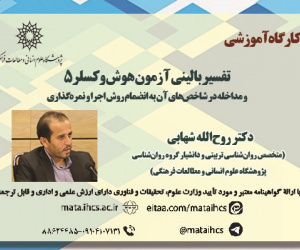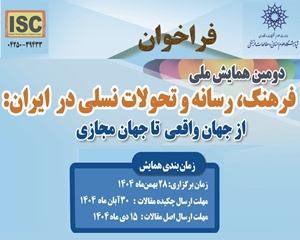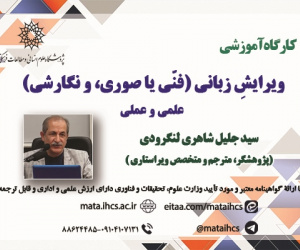ارتباط بین اهرم مالی با عملکرد مالی با تأکید بر درماندگی مالی و بحران ارزی در بورس اوراق بهادار تهران (مقاله علمی وزارت علوم)
درجه علمی: نشریه علمی (وزارت علوم)
آرشیو
چکیده
هدف: هدف اصلی این مقاله، بررسی ارتباط بین اهرم مالی و عملکرد مالی است. پس از مشخص شدن این ارتباط، اثر تعدیلگری درماندگی مالی بر شدت و ضعف این رابطه بررسی خواهد شد؛ سپس با توجه به اهمیت اثر بحران ارزی بر عملکرد مالی شرکت ها، اثر این متغیر تعدیلگر نیز بر رابطه بین اهرم مالی و عملکرد مالی بررسی می شود.روش: جامعه آماری پژوهش، شرکت های بورس اوراق بهادار تهران در دوره زمانی ۱۳۹۲ تا ۱۴۰۱ است. داده های موردنیاز برای تحلیل رابطه بین داده ها، به روش کتابخانه ای و با استفاده از وبگاه های بانک مرکزی، بانک جهانی و کدال استخراج شده است. با استفاده از روش حذف سیستماتیک در جامعه، محدودیت هایی در نظر گرفته شد و پس از اِعمال محدودیت ها، ۱۱۴ شرکت از صنایع مختلف بورس اوراق بهادار تهران، به جز صنعت مالی و سرمایه گذاری برای نمونه انتخاب شد. در این پژوهش اهرم مالی به عنوان متغیر مستقل؛ عملکرد مالی، بازده دارایی ها، بازده حقوق صاحبان سهام، شاخص کیو توبین، نرخ بازده فروش و نرخ بازده جریان نقدی به عنوان متغیر وابسته و درماندگی مالی و بحران ارزی به عنوان متغیر تعدیلگر در نظر گرفته شد. داده ها با استفاده از روش تحلیل هم بستگی و رگرسیون چندمتغیره تجزیه وتحلیل شد. برای برازش مدل، از روش حداقل مربعات تعمیم یافته (EGLS) استفاده شد.یافته ها: یافته ها نشان می دهد که اهرم مالی بر عملکرد مالی تأثیر منفی معناداری دارد و این تأثیر، برای شرکت هایی با ریسک درماندگی مالی بالاتر، ضعیف تر است. به علاوه، شواهد حاصل از یافته ها نشان می دهد که بحران ارزی، ارتباط منفی بین اهرم مالی و عملکرد مالی را تشدید می کند.نتیجه گیری: ارتباط منفی بین اهرم مالی و عملکرد مالی، نشان می دهد زمانی که شرکت ها سطح بدهی های خود را افزایش می دهند، افزایش هزینه های بدهی غالب است و از منافع آن فراتر می رود. مدیران می توانند با کاهش سطح اهرم مالی، عملکرد شرکت را بهبود بخشند و با برنامه ریزی برای افزایش وجوه داخلی، آن را به عنوان ابزاری مهم برای ارتقای عملکرد خود و جلوگیری از محدودیت های مالی خارجی در نظر بگیرند. در شرایط ریسک درماندگی مالی بالا، اثر منفی اهرم مالی بر عملکرد مالی کاهش می باید. مشکلات مدیریتی و کمبود سیستم های عملیاتی و کنترلی در شرکت هایی با ریسک درماندگی مالی بالا شدیدتر است؛ بنابراین، نظارت، محدودیت و افزایش کارایی شرکت ناشی از اهرم مالی بالا، بر عملکرد مالی شرکت هایی تأثیر مثبت قوی خواهد داشت که ریسک درماندگی مالی (شامل وضعیت نکول در پرداخت ها، فرایند ورشکستگی و انحلال) بالایی دارند. می توان گفت اهرم مالی بالاتر، به دلیل نقش انضباطی خود، عملکرد مالی شرکت ها را ارتقا می دهد. علاوه براین، بحران ارزی به دلیل ایجاد تورم بالاتر، به افزایش هزینه های سرمایه گذاری و استفاده از وام و تسهیلات مالی منجر خواهد شد. کاهش سطح اهرم مالی در زمان بحران ارزی که دسترسی به منابع مالی خارجی گران تر و دشوارتر می شود، می تواند به بهبود عملکرد مالی شرکت منجر شود.The Relationship between Financial Leverage and Financial Performance: Emphasizing Financial Distress and Currency Crisis in the Tehran Stock Exchange
ObjectiveThe main objective of this article is to examine the relationship between financial leverage and financial performance. After identifying this relationship, the moderating effect of financial distress on the strengths and weaknesses of this relationship will be investigated. Then, due to the importance of the effect of the currency crisis on the financial performance of companies, the effect of this moderating variable on the relationship between financial leverage and financial performance is also examined. MethodsThe statistical population investigated in this research comprises companies listed on the Tehran Stock Exchange during the period from 2013 to 2022. The data needed to analyze the relationships were collected using the library research method, utilizing databases from the Central Bank of Iran, the World Bank, and Codal. Systematic elimination was employed in the population to account for limitations, resulting in a final sample of 114 companies from various sectors of the Tehran Stock Exchange, excluding the financial and investment sectors. In this research, financial leverage is considered the independent variable, while financial performance measures such as return on assets, return on equity, Tobin's q, return on sales (ROS), and return on cash flow are treated as dependent variables. Financial distress and the currency crisis serve as moderating variables. Data were analyzed using correlation analysis and multivariate regression, with the Estimated Generalized Least Squares (EGLS) method applied to fit the model. ResultsThe findings indicate that financial leverage has a significant negative impact on financial performance, and this effect is attenuated in companies that face a higher risk of financial distress. Furthermore, the results suggest that a currency crisis intensifies the negative relationship between financial leverage and financial performance. ConclusionThe negative relationship between financial leverage and a company's financial performance indicates that as a company increases its debt level, the rise in borrowing costs outweighs the benefits. Managers can enhance the company's financial performance by reducing financial leverage levels and planning to increase internal funds, which should be considered an essential strategy to improve performance and mitigate external financing constraints. In high-risk financial distress conditions, the negative effect of financial leverage on financial performance tends to diminish. Management issues and the absence of operational and control systems are more pronounced in companies at a higher risk of financial distress; therefore, monitoring, limiting, and enhancing company efficiency due to high financial leverage will have a significantly positive effect on the financial performance of companies facing a high risk of financial distress (including payment defaults, bankruptcy, and liquidation). It can be asserted that higher financial leverage can improve the financial performance of companies due to its disciplinary role. Additionally, during a currency crisis, which typically results in higher inflation, investment costs and the utilization of loans and financial resources will increase. Reducing financial leverage during such crises, when access to foreign financial resources becomes more expensive and difficult, may lead to improved financial performance for the company.







